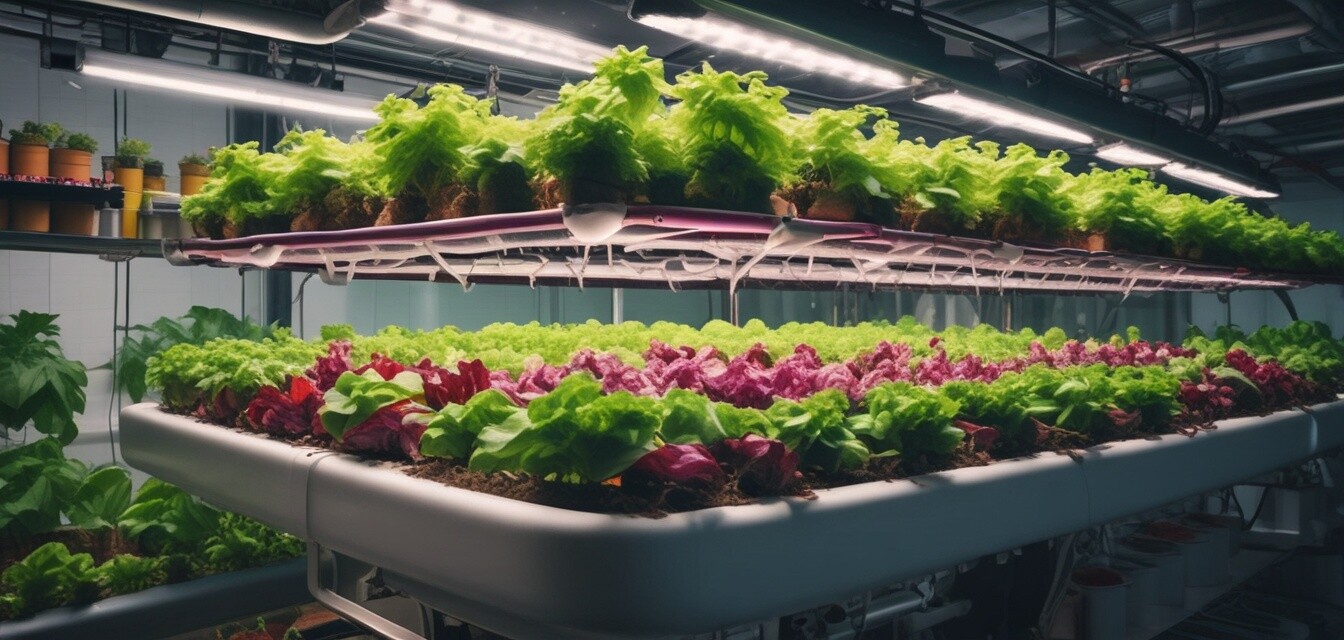
How Hydroponics is Revolutionizing Crop Production
- Hydroponic systems significantly improve water efficiency compared to traditional farming.
- Crops can be grown year-round, regardless of external climate conditions.
- Hydroponics reduces the need for pesticides and other harmful chemicals.
- Urban farming through hydroponics can help alleviate food deserts.
- This method opens doors for innovation and technology in agriculture.
In recent years, hydroponics has emerged as a groundbreaking method that is changing the traditional landscape of crop production. This innovative approach allows for the growth of plants without soil, delivering nutrients directly to the roots through a nutrient-rich water solution. As food security becomes a pressing global concern, the benefits of hydroponics are gaining attention, providing solutions that enhance agricultural efficiency and sustainability.
The Basics of Hydroponics
Hydroponics involves growing plants in a soilless environment. This method can be implemented in various systems, making it adaptable for home gardeners and large-scale agricultural operations alike. Some of the most common types of hydroponic systems include:
- Deep Water Culture (DWC)
- Nutrient Film Technique (NFT)
- Wick System
- Drip Systems
- Vertical Hydroponics
How Hydroponics Works
The process begins by suspending plants in a solution that is rich in water and nutrients. This method ensures that plants receive optimal conditions for growth. Key components that make hydroponics successful include:
| Component | Description |
|---|---|
| Nutrient solution | A balanced mixture of water and nutrients essential for plant growth. |
| Growing medium | Substitutes for soil such as rock wool, clay pellets, or coconut coir. |
| Light source | LED or fluorescent lights are often used to provide adequate illumination. |
| Water management | Automation systems to maintain proper moisture levels and nutrient distribution. |
Advantages of Hydroponic Crop Production
Adopting hydroponic systems offers numerous advantages. Here are some of the key benefits:
Pros
- Uses up to 90% less water compared to traditional soil-based agriculture.
- Allows crops to be grown in urban areas, helping reduce food transportation costs.
- Accelerates plant growth cycles, leading to higher yields.
- Reduces vulnerability to weather-related challenges.
- Minimizes space usage, enabling efficient planting in small areas.
Cons
- Initial setup costs can be high for complex systems.
- Requires regular monitoring of nutrient levels and pH.
- Technical knowledge of hydroponics is needed for optimal results.
Hydroponics and Food Security
Hydroponics has the potential to play a crucial role in addressing food security issues worldwide. As urban populations increase, space for traditional farming diminishes. Hydroponics offers a viable solution by allowing food production in limited spaces, such as rooftops, basements, and warehouses.
Reducing Dependence on Transportation
By growing food closer to urban centers, hydroponics reduces transportation costs and carbon footprints associated with food logistics. This is especially important for places referred to as food deserts, where access to fresh produce is limited.
The Future of Hydroponics
As technology continues to advance, the future of hydroponics looks promising. Innovations in automation, monitoring, and nutrient delivery systems are enabling more efficient and productive systems. Some emerging trends include:
- Integration of AI and IoT for real-time monitoring.
- Vertical farming methods to maximize space.
- Smart hydroponic systems that use less energy and water.
Community Initiatives and Urban Farming
Many communities are beginning to recognize the value of hydroponics as a sustainable food production practice. Urban gardens and local initiatives are being increasingly adopted, which not only provide fresh produce but also foster community engagement and education around sustainable farming practices. For further insights into community initiatives, visit our DIY Projects section.
Conclusion
Hydroponics represents a significant shift in crop production, offering innovative solutions to ongoing challenges in traditional agriculture. With benefits that include water efficiency, higher crop yields, and the ability to produce food in urban settings, this method holds the promise of contributing to global food security. As we embrace technology and sustainable practices, hydroponics will continue to shape the future of agriculture.
Tips for Getting Started with Hydroponics
- Start with simple systems like Deep Water Culture for beginners.
- Invest in high-quality nutrient solutions specifically designed for hydroponics.
- Monitor pH and nutrient levels regularly to ensure optimal plant growth.
- Research plant varieties that do well in hydroponic systems.
- Join online communities or local clubs to share experiences and tips.
If you're interested in expanding your knowledge about hydroponics, check out more articles in our News and Trends section for the latest advances in the field.

